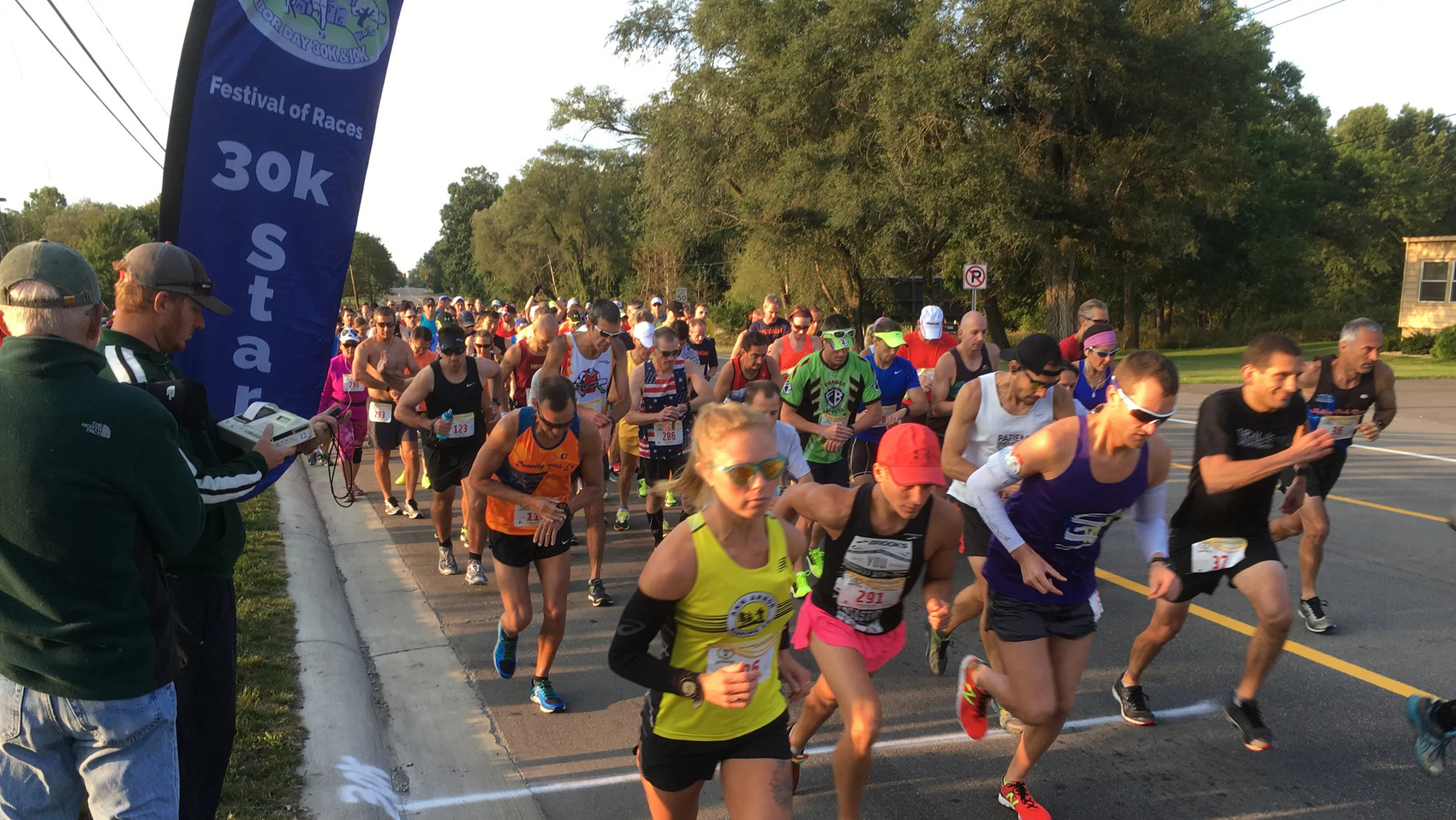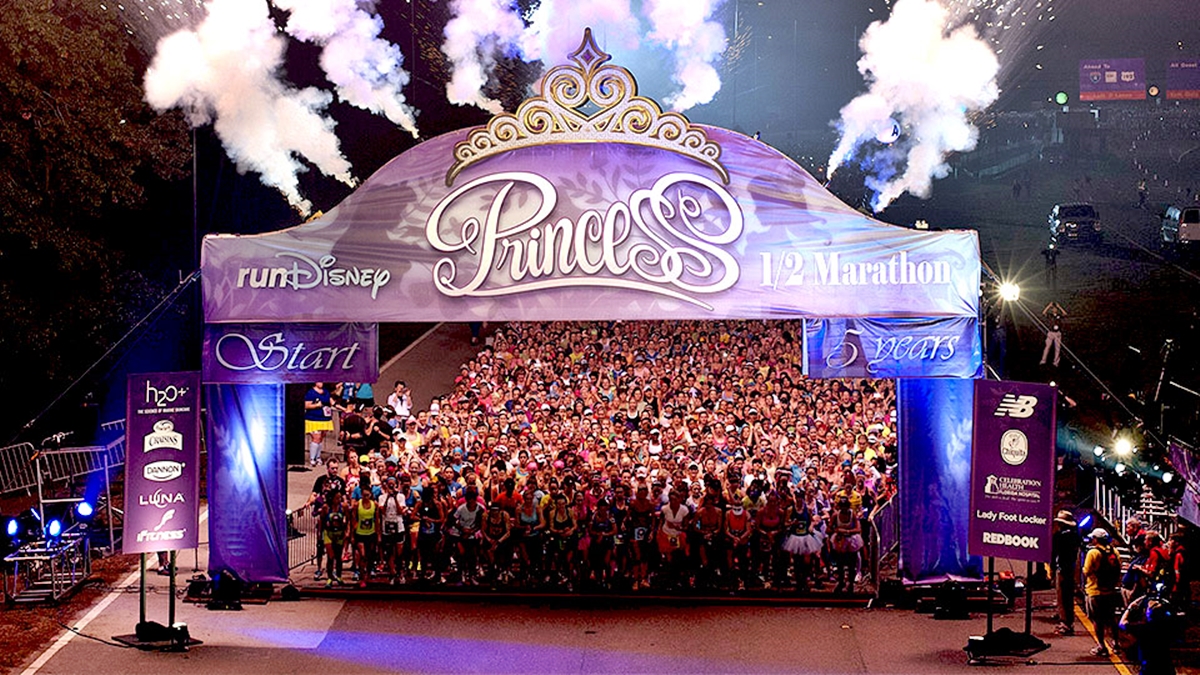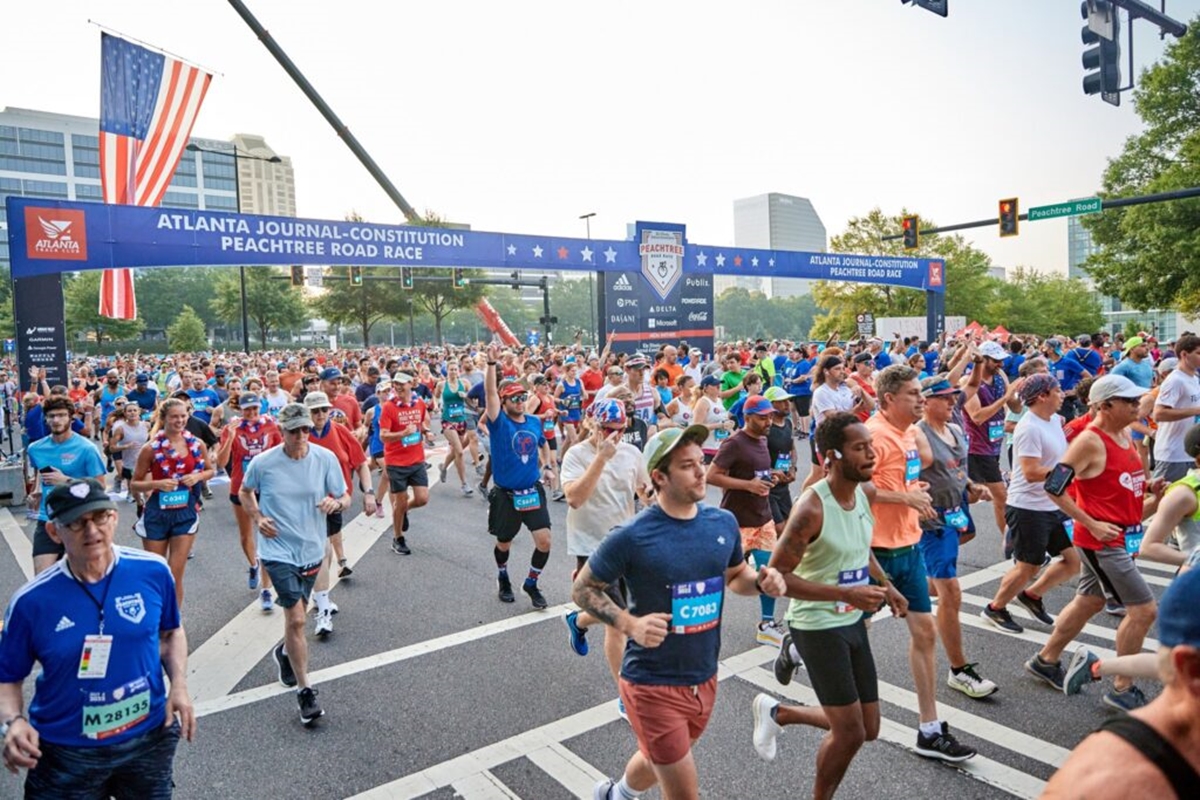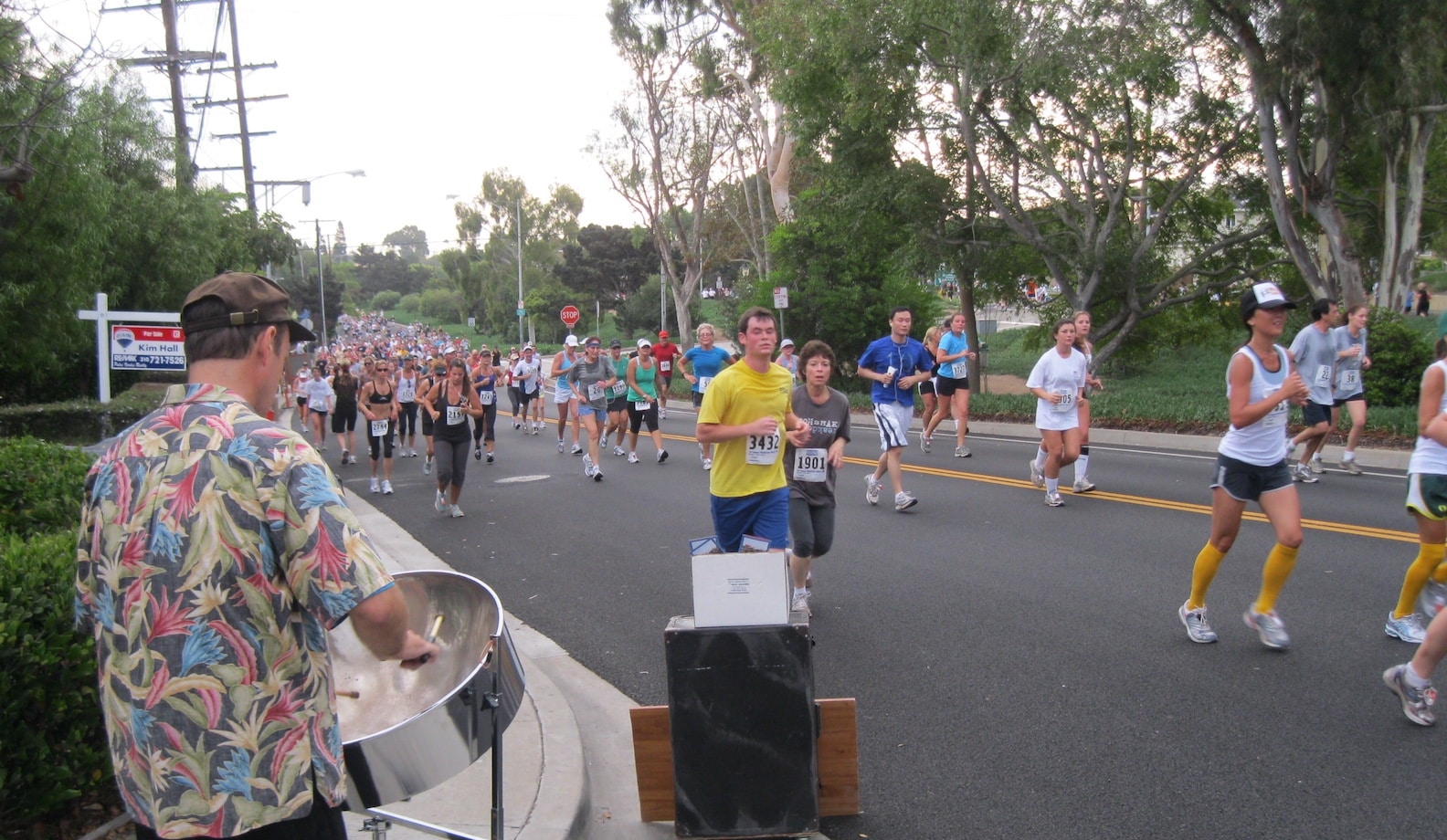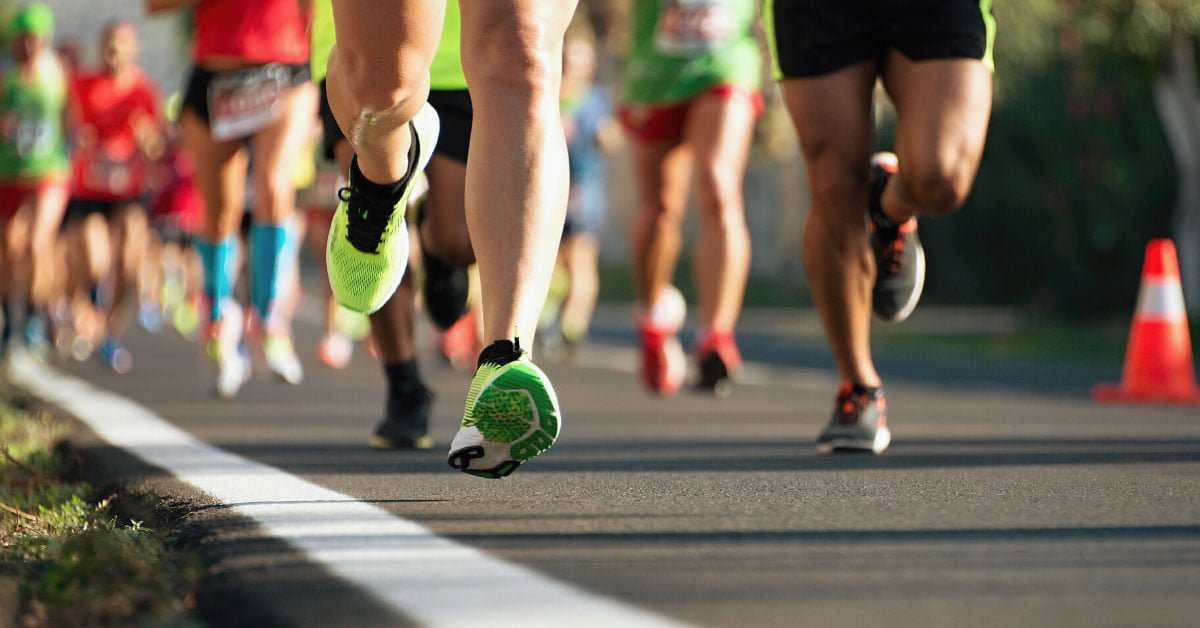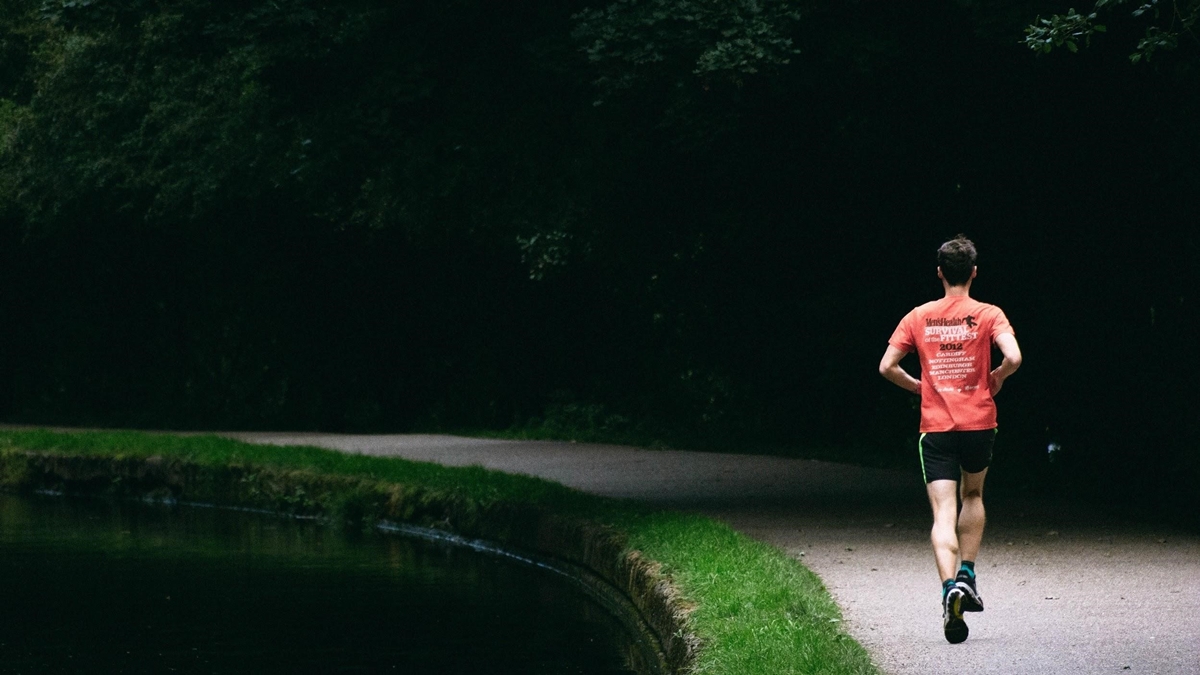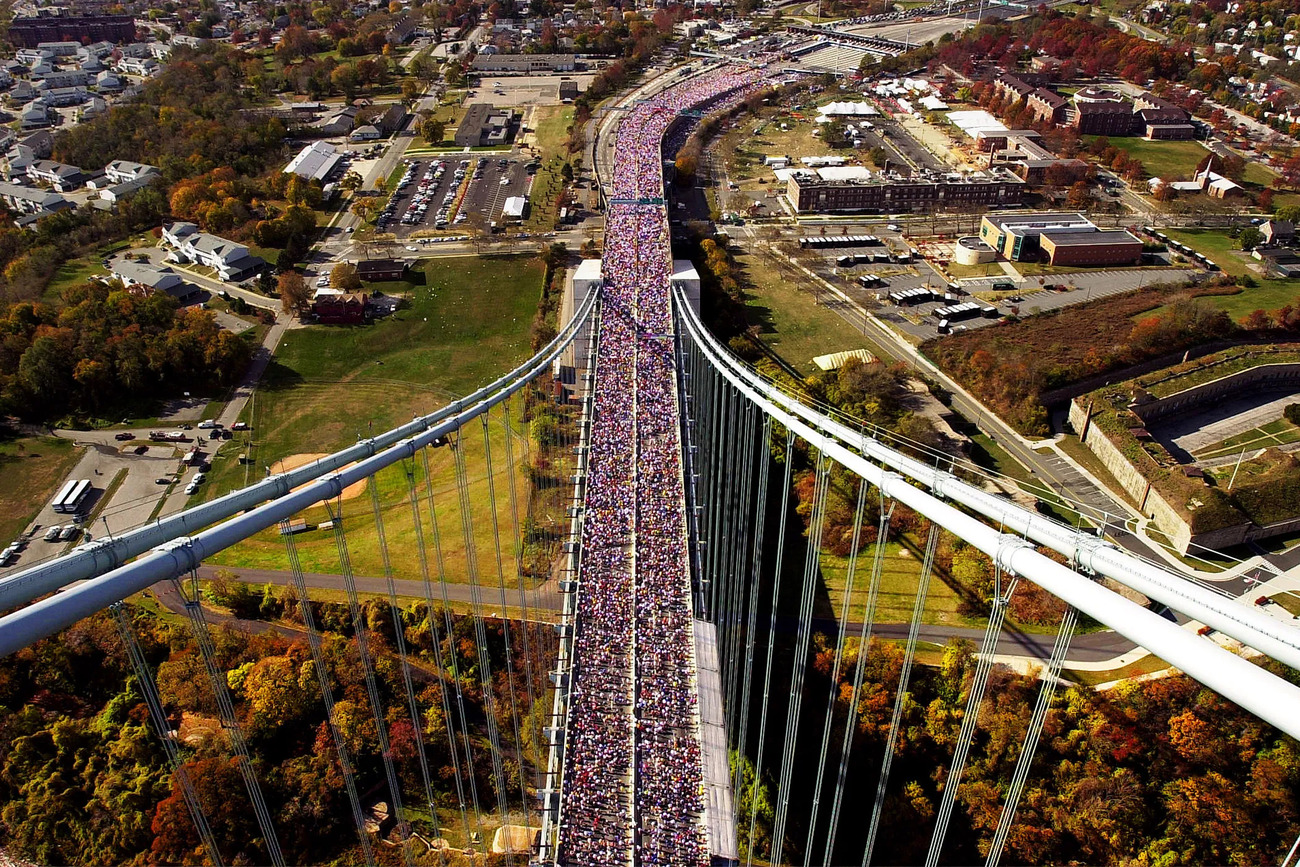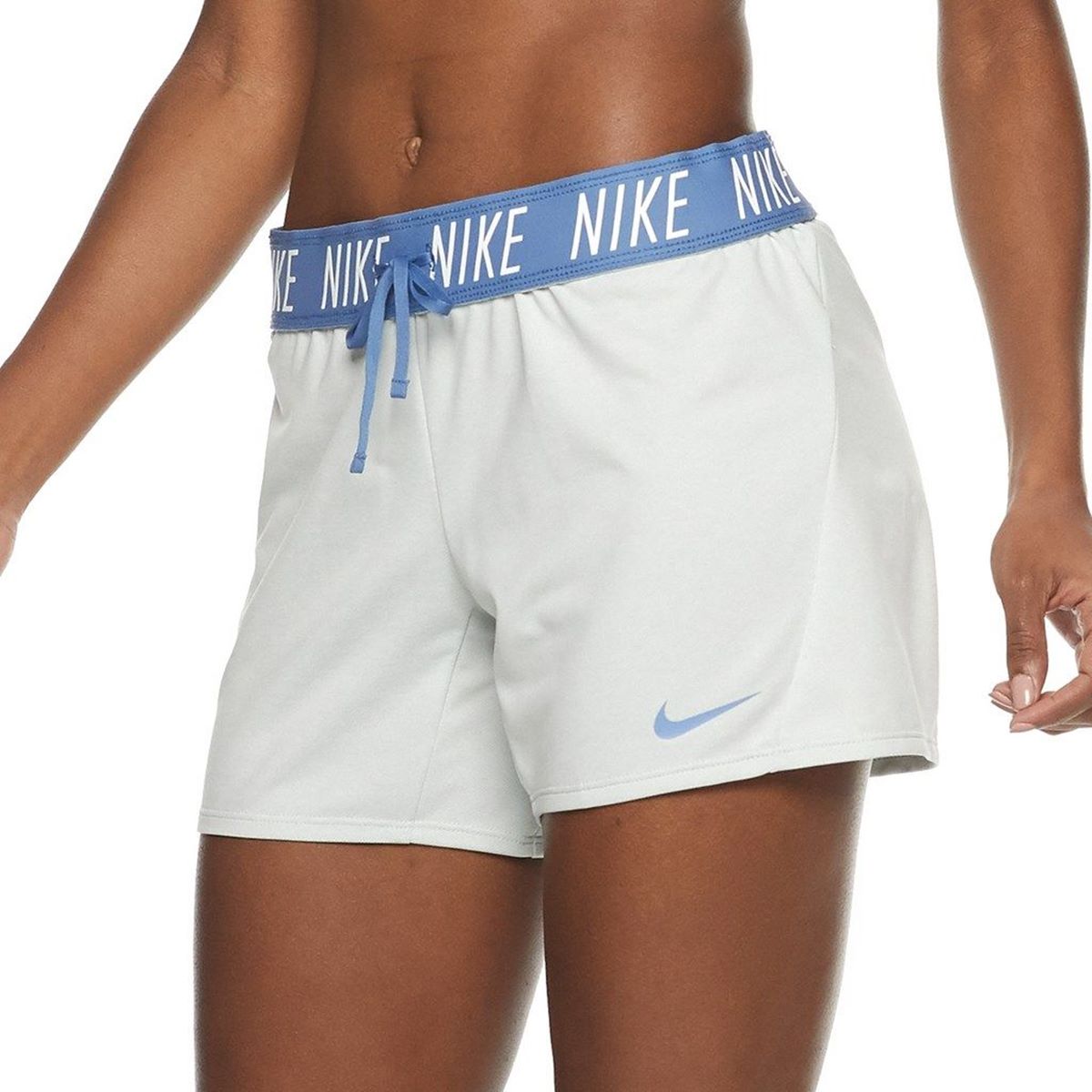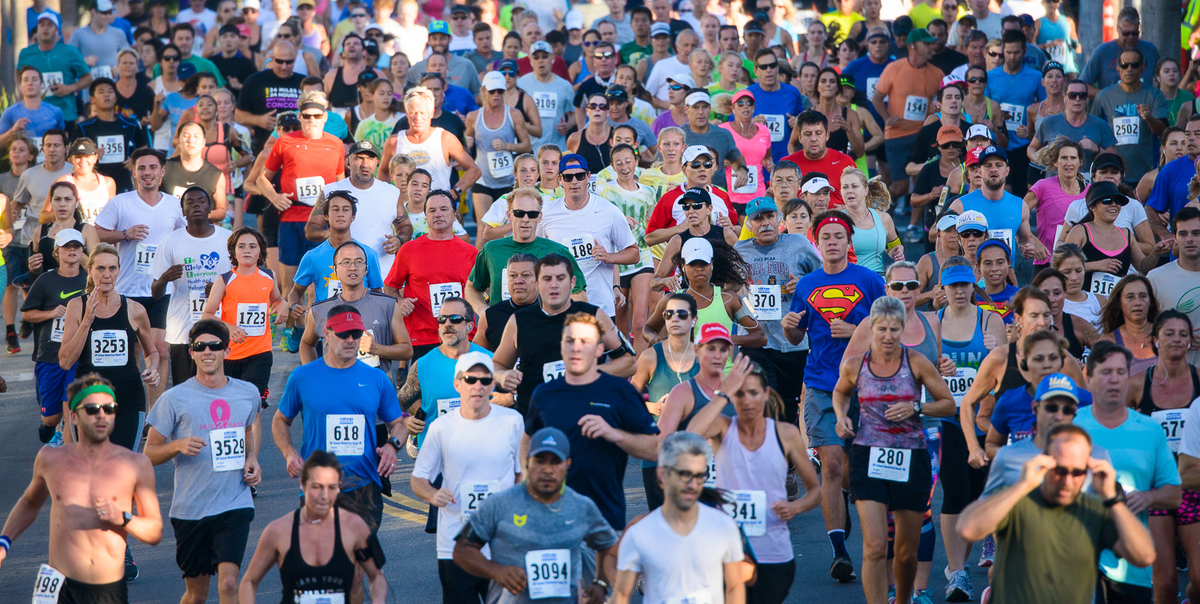

Featured
How Much Money Is The 10K Run
Modified: January 22, 2024
Learn how much money you can make by participating in the featured 10K run event and find out the rewards and benefits you can gain from this amazing opportunity.
Introduction
Welcome to the exciting world of 10K runs! Whether you’re a seasoned runner or just getting started on your fitness journey, participating in a 10K run can be a rewarding and exhilarating experience. But before lacing up your running shoes and hitting the pavement, it’s important to understand the financial aspects associated with these events. From registration fees to additional costs like apparel and travel, it’s essential to have a clear understanding of how much money you can expect to spend on a 10K run.
10K runs, also known as 10-kilometer races, have gained immense popularity in recent years. They offer a perfect balance between a challenging distance and a manageable goal for participants. Not only do 10K runs provide an excellent opportunity for runners to test their endurance and speed, but they are also enjoyable events that bring together people from all walks of life with a shared passion for fitness.
The cost of participating in a 10K run can vary considerably depending on various factors such as the location, the reputation of the event, the amenities provided, and the overall scale of the race. This article will delve into the different elements that contribute to the cost of participating in a 10K run, providing you with valuable insights on what to expect and how to plan your budget accordingly.
Whether you’re considering signing up for your first 10K run or you’re a seasoned veteran of the sport, it’s crucial to have a clear understanding of the financial commitment that comes with participating in these events. By knowing what to expect in terms of entry fees, additional costs, and potential fundraising opportunities, you can ensure that you have a memorable and financially sustainable experience.
The Significance of 10K Runs
10K runs hold a significant place in the running community and have become increasingly popular for runners of all levels. The distance of a 10K run, which is approximately 6.2 miles, offers a unique challenge that pushes participants to test their endurance and speed. Here are a few reasons why 10K runs hold such significance:
- Manageable yet challenging: A 10K run is seen as the perfect middle ground between shorter races like 5Ks and longer distances like half marathons or marathons. It allows runners to set a challenging goal without the intense training and time commitment needed for longer races.
- Accessibility: 10K runs are typically open to runners of all levels, making them a welcoming choice for beginners and experienced runners alike. They offer the opportunity to participate in a well-organized event and experience the excitement of crossing the finish line.
- Community and camaraderie: 10K runs attract a diverse range of participants, creating a sense of community and camaraderie among runners. Whether it’s supporting fellow runners or being cheered on by spectators along the course, the atmosphere of a 10K run is one of encouragement and celebration.
- Health and fitness benefits: Participating in a 10K run is not only a great way to challenge oneself physically but also offers numerous health benefits. Regular training for a 10K helps improve cardiovascular health, increase endurance, and strengthen muscles, contributing to overall fitness and well-being.
- Personal achievement: Crossing the finish line of a 10K run is a moment of personal achievement and a testament to the hard work and dedication put into training. It can boost confidence and provide a sense of accomplishment, motivating participants to set new goals and continue their fitness journey.
Overall, 10K runs play a vital role in the running community by providing an accessible challenge, fostering a sense of community, promoting health and fitness, and allowing individuals to achieve personal milestones. They are more than just races; they represent a celebration of strength, determination, and the joy of running.
Average Entry Fees for 10K Runs
When considering participating in a 10K run, it’s important to take into account the entry fees associated with these events. The cost of entry can vary depending on various factors such as location, race reputation, and amenities provided. On average, the entry fees for 10K runs range from $30 to $60, with some premium races charging higher fees.
Local, community-based 10K runs tend to have lower entry fees, typically ranging from $30 to $40. These races often focus on providing a fun and inclusive experience, with a greater emphasis on participant enjoyment rather than extravagant amenities.
On the other hand, larger-scale 10K runs or races that are part of popular running series may have entry fees ranging from $40 to $60. These events often offer additional perks such as professional timing, commemorative race shirts or medals, post-race refreshments, and entertainment. The higher entry fees for these races help cover the costs of organizing and delivering these premium experiences to participants.
It’s important to note that entry fees for 10K runs are typically tiered, meaning they increase as the race date approaches. Early bird registration, which opens well in advance of the race, often offers discounted rates for those who sign up early. As the race date draws closer, the entry fees gradually increase to account for added logistical expenses and to encourage participants to register sooner rather than later.
Additionally, some 10K runs offer group or team registration discounts, allowing participants to enjoy reduced entry fees when registering with a certain number of friends or teammates. This not only makes the event more affordable for participants but also promotes a sense of teamwork and social interaction among participants.
It’s worth mentioning that entry fees for 10K runs often include more than just the race itself. Participants may receive a participant’s race bib, a timing chip to accurately track their race time, and access to race-day amenities such as water stations, medical support, and post-race celebrations.
While the average entry fees for 10K runs can give you a general idea of what to expect, it’s essential to check the specific race details and registration information for each event you’re interested in. Factors such as location, race reputation, race amenities, and any associated fundraising initiatives can impact the entry fees. By understanding the average costs associated with participating in a 10K run, you can begin to plan and budget accordingly.
Factors Affecting Entry Fee Costs
Entry fees for 10K runs can vary based on several factors. Understanding these factors can give you insights into why some races may have higher entry fees than others. Here are the key factors that can affect entry fee costs for 10K runs:
- Race Reputation and Prestige: Popular and well-established 10K races with a strong reputation in the running community often come with higher entry fees. These races may attract elite runners, provide exceptional organization and amenities, and have a history of delivering a top-notch race experience.
- Race Amenities: The amenities offered to participants can impact the entry fee. Races that provide additional perks such as technical race shirts, medals, professional timing, personalized race bibs, post-race refreshments, and entertainment tend to charge higher fees to cover these added costs and enhance the participant experience.
- Location and Course: The location of the race and the course layout can also influence the entry fee. For example, races held in scenic or popular tourist destinations or those with unique and challenging courses may command higher entry fees due to the additional logistical costs and the added value of the race experience.
- Timing and Demand: Entry fees can fluctuate based on the time of year and the overall demand for the race. Races held during peak running seasons or around major holidays may have higher fees due to increased demand. Additionally, races with a limited number of spots available may implement tiered pricing, where the entry fees increase as the race capacity fills up.
- Participant Swag: Some 10K races include branded merchandise or exclusive race swag as part of the entry fee. This can include items like hats, tote bags, water bottles, or other promotional materials. The inclusion of these items can contribute to a higher entry fee to cover the costs of producing and distributing such merchandise.
- Race Production Costs: Organizing and managing a race involves various costs, such as securing permits, hiring and training staff, medical support, course setup, and post-race activities. These production costs can influence the overall entry fee, especially for races with large participant numbers or those aiming to provide a high-quality race experience.
It’s important to note that while higher entry fees can provide additional benefits and a more premium race experience, there are many affordable 10K races available that offer a fantastic running experience without breaking the bank. By considering these factors, you can make an informed decision when choosing which 10K runs to participate in based on your budget and preferences.
Sponsorship and Fundraising Opportunities
For participants looking to offset the costs of participating in a 10K run, sponsorship and fundraising opportunities can be a valuable avenue to explore. Many races offer various sponsorship levels, allowing individuals or businesses to contribute financially in exchange for promotional benefits. Additionally, participants can engage in fundraising efforts to support a charitable cause while covering their own entry fees. Here’s how sponsorship and fundraising opportunities can make 10K runs more affordable:
Sponsorship: Race organizers often seek sponsorship from businesses, both local and national, to help offset the costs of organizing the event. These sponsorships can come in various forms, such as financial contributions, in-kind donations, or services. In return, sponsors receive promotional benefits, such as logo placement on race marketing materials, recognition during the event, or opportunities to distribute promotional materials to participants. By securing a sponsorship, race organizers can reduce the entry fees for participants or improve the overall race experience.
Individual Sponsorship: Participants themselves can pursue individual sponsorships to help cover their entry fees. This involves reaching out to friends, family, or local businesses and asking for their financial support in exchange for recognition on race apparel, social media shoutouts, or other personalized benefits. Individual sponsorship can be a great way for participants to offset their costs while involving their community in their running journey.
Fundraising: Many 10K runs are associated with charitable causes, and participants can raise funds to support these organizations. Fundraising efforts can be done through online platforms, such as crowdfunding websites or social media campaigns, where participants can share their story and collect donations from friends, family, and colleagues. Some races even have dedicated fundraising platforms connected to their registration process, making it easy for participants to raise funds while signing up for the event. By setting fundraising goals and sharing their efforts with others, participants can raise money for a good cause while covering their own entry fees.
It’s important to check with the specific race organizers regarding their sponsorship and fundraising policies. Some races may have specific guidelines or restrictions, while others may provide resources or support to participants in their sponsorship or fundraising endeavors. By taking advantage of these opportunities, participants can make their 10K run experience not only affordable but also impactful by giving back to the community or supporting a cause they believe in.
Cost Breakdown: Registration, Timing Chips, and Race Bibs
When budgeting for a 10K run, it’s important to understand the cost breakdown of various elements associated with the event. Apart from the entry fee, there are additional costs to consider, such as timing chips and race bibs. Let’s take a closer look at these components:
Registration: The registration fee is typically the primary cost associated with participating in a 10K run. As mentioned earlier, the average entry fees range from $30 to $60, depending on factors such as race reputation, amenities provided, and race scale. This fee covers the basic participation cost and provides access to the race, including the race course, water stations, medical support, and other race-day amenities.
Timing Chips: Timing chips are small devices that are often attached to runners’ shoes or bibs to accurately track their race time. These chips use RFID (Radio Frequency Identification) technology to record each runner’s start and finish times. Timing chips are particularly important for races where participants are competing for personal bests or overall rankings. Some races may include timing chips as part of the registration fee, while others may charge an additional fee ranging from $5 to $15 to cover the costs of the timing chip systems and data management.
Race Bibs: Race bibs are essential for identifying participants during the race. They typically display the runner’s unique race number and sometimes include their name, the race logo, or sponsor logos. Race bibs are often made of tear-resistant material and are attached to the runner’s clothing using safety pins or adhesive backing. Similar to timing chips, some races include race bibs as part of the registration fee, while others may charge an additional fee of around $5 to $10 for the production and distribution of these bibs.
It’s important to note that although these costs may seem small compared to the entry fee, they contribute to the overall race experience and are necessary for efficient race management. Participants should ensure they read the race details carefully to understand what is included in the registration fee and whether additional charges apply for timing chips or race bibs.
For participants who want to keep their costs down, it’s worth considering races that include timing chips and race bibs as part of the registration fee. Additionally, participants should ensure they follow the race guidelines regarding the return or disposal of timing chips and race bibs after the event to avoid any potential extra charges or penalties.
By understanding the cost breakdown of registration, timing chips, and race bibs, participants can plan their budget accordingly and have a clear picture of the overall financial commitment involved in participating in a 10K run.
Additional Costs: Apparel, Accessories, and Training
Participating in a 10K run involves more than just the entry fee and the essential race components. There are additional costs to consider, such as apparel, accessories, and training. Let’s break down these additional expenses:
Apparel: Having the right apparel for a 10K run is crucial for comfort and performance. This includes investing in proper running shoes, moisture-wicking socks, and suitable clothing that allows for ease of movement. While the cost of running shoes can vary, a good pair typically ranges from $50 to $150 or more, depending on the brand and features. Additionally, other apparel items such as running shorts, shirts, sports bras, and accessories like hats, sunglasses, and compression sleeves might be needed. The cost of apparel can vary based on personal preferences and brands, so it’s important to budget accordingly.
Accessories: There are various accessories that can enhance the running experience and provide additional convenience and safety. These can include items such as a running watch or GPS device to track distance and pace, a hydration belt or handheld water bottle for staying hydrated during the run, a running belt or armband to hold essentials like keys, identification, and smartphones. The cost of these accessories can vary, but budgeting around $20 to $50 for essential accessories is a reasonable estimate.
Training: Proper training is essential for successfully completing a 10K run. Depending on your fitness level and previous running experience, you may consider hiring a running coach or joining a training program, which could involve additional costs. Alternatively, you can find free training plans and resources online or seek guidance from experienced runners. Additionally, participating in races may require specific training equipment, such as interval timers or resistance bands, which should be factored into your budget.
When budgeting for these additional costs, it’s important to consider the longevity and quality of the items you’re investing in. While it may be tempting to opt for the cheapest options, investing in high-quality apparel and accessories can provide better durability, comfort, and performance in the long run.
Furthermore, it’s worth mentioning that these additional costs are not recurring expenses. Once you have acquired the necessary apparel, accessories, and training resources, they can be utilized for future runs and training sessions. Therefore, while there may be some initial investment, the long-term benefits and enjoyment gained from participating in 10K runs can outweigh the associated costs.
By carefully considering and budgeting for these additional costs, participants can ensure they have the necessary equipment and resources to maximize their performance and overall enjoyment of the 10K run experience.
Hidden Costs: Travel and Accommodation
When planning to participate in a 10K run, it’s important to consider the hidden costs associated with travel and accommodation. These expenses can vary depending on the location of the race and the distance you need to travel. Here’s a breakdown of these hidden costs:
Travel: Depending on the location of the 10K run, you may need to factor in travel expenses such as transportation to and from the race location. This could include costs for airfare, train or bus tickets, or gasoline if you plan to drive. It’s also important to consider the cost of local transportation, such as taxis or ride-sharing services, if the race venue is not easily accessible from your accommodation. It’s advisable to plan your travel arrangements well in advance to secure the best deals and minimize costs.
Accommodation: If the 10K run is taking place far from your home, you may need to budget for overnight accommodation. The cost of accommodation can vary depending on factors such as the location, seasonality, and proximity to the race venue. Options can range from hotels and resorts to hostels and vacation rentals. It’s recommended to book accommodations in advance to secure availability and potentially access discounted rates for race participants.
Meals and Incidentals: While participating in a 10K run, you’ll likely need to budget for meals and incidental expenses during your stay. This includes the cost of breakfast, lunch, dinner, as well as snacks and any additional items you may need while traveling. It’s helpful to have an idea of local dining options in the area surrounding the race venue and plan your meals accordingly to avoid overspending.
Entertainment and Sightseeing: If your 10K run takes you to a new destination, you may be tempted to explore and experience the local attractions. Depending on your interests, there may be additional costs for activities, sightseeing tours, or entrance fees to museums, landmarks, or other points of interest. You can allocate a separate budget for entertainment and sightseeing, ensuring that you have a memorable experience in addition to participating in the race.
It’s important to be mindful of these hidden costs and include them in your overall budget for the 10K run. Researching and planning ahead can help you find the best deals on travel, accommodation, and meals, allowing you to manage these costs effectively. Additionally, consider carpooling or sharing accommodation with other participants to help split the expenses and reduce individual costs.
By accounting for these hidden costs and budgeting accordingly, you can ensure that your 10K run experience is not only enjoyable but also financially manageable.
Popular 10K Runs and Their Costs
There are numerous popular 10K runs across the globe, each offering a unique race experience and attracting participants from all walks of life. Let’s take a look at some well-known 10K runs and their associated costs:
The Peachtree Road Race, Atlanta, Georgia: Known as the world’s largest 10K, this iconic race takes place on the 4th of July and attracts over 60,000 participants. The entry fee averages around $35 to $45, with early bird registration options available. The Peachtree Road Race is famous for its festive atmosphere, vibrant costumes, and picturesque course through the streets of Atlanta.
The Bolder Boulder, Boulder, Colorado: Held on Memorial Day, this 10K race boasts stunning views of the Rocky Mountains and draws over 50,000 participants. The entry fee for the Bolder Boulder ranges from $50 to $75, with various registration options, including different waves and race packages. Participants of the Bolder Boulder enjoy live music along the course, unique wave starts based on age and ability, and a memorable finish at the University of Colorado’s Folsom Field.
The City2Surf, Sydney, Australia: Considered one of the world’s largest and most iconic fun runs, this 10K race attracts over 80,000 participants each year. The entry fee for the City2Surf varies depending on registration dates, with options ranging from $50 to $100. Participants in the City2Surf run from the Sydney CBD to Bondi Beach, taking in breathtaking views of iconic landmarks such as the Sydney Opera House and Harbour Bridge.
The Cooper River Bridge Run, Charleston, South Carolina: A favorite among runners, this 10K race highlights the beauty of Charleston’s iconic Cooper River Bridge and historic downtown. The entry fee for the Cooper River Bridge Run is approximately $45 to $55, with early bird and group registration discounts available. With over 40,000 participants, this race showcases the charm and hospitality of Charleston while offering a challenging yet rewarding course.
The Berlin City Run, Berlin, Germany: As one of the largest 10K races in Europe, the Berlin City Run attracts over 10,000 participants. The entry fee for this race ranges from around €25 to €40, depending on the registration period. The Berlin City Run allows participants to experience the vibrant atmosphere of the German capital, passing famous landmarks and immersing themselves in the city’s rich history.
It’s important to note that the costs mentioned above are approximate and subject to change. It’s advisable to check the specific race websites for the most up-to-date information on entry fees, registration options, and any additional costs associated with participating in these popular 10K runs.
Participating in these renowned 10K runs not only provides a memorable running experience but also offers the opportunity to be a part of prestigious events that attract a diverse range of participants from around the world.
Conclusion
Participating in a 10K run can be a rewarding and exhilarating experience, but it’s important to understand the financial aspects associated with these events. From entry fees to additional costs like apparel, accessories, travel, and accommodation, there are various factors to consider when budgeting for a 10K run.
Entry fees for 10K runs can vary depending on factors such as race reputation, amenities provided, and race scale. On average, entry fees range from $30 to $60, with local community-based runs tending to have lower fees and larger-scale races charging more for premium experiences. Understanding the average entry fees for 10K runs can help you plan your budget effectively.
Additionally, there are hidden costs to consider, such as apparel, accessories, and training. Investing in proper running shoes, clothing, and accessories is essential for comfort and performance during the run. Training resources and programs may also incur additional costs, depending on your individual needs and preferences.
It’s important to account for hidden costs like travel and accommodation if the 10K run is held in a location that requires you to travel. Consider transportation expenses and overnight accommodations, along with incidental costs for meals and entertainment.
As you plan your participation in a 10K run, explore sponsorship and fundraising opportunities to help offset costs. Individual sponsorship and fundraising can be effective ways to involve your community and support charitable causes while covering your own entry fees.
By considering all these factors, you can create a comprehensive budget and make informed decisions when choosing which 10K runs to participate in. Remember to research specific race details, check for early bird registration discounts, and explore cost-saving options like shared accommodations or carpooling.
Participating in a 10K run goes beyond the financial commitment; it’s an experience that offers personal growth, a sense of accomplishment, and the opportunity to be part of a supportive community. So, lace up your running shoes, plan your budget wisely, and embark on an incredible journey of fitness, determination, and joy.
